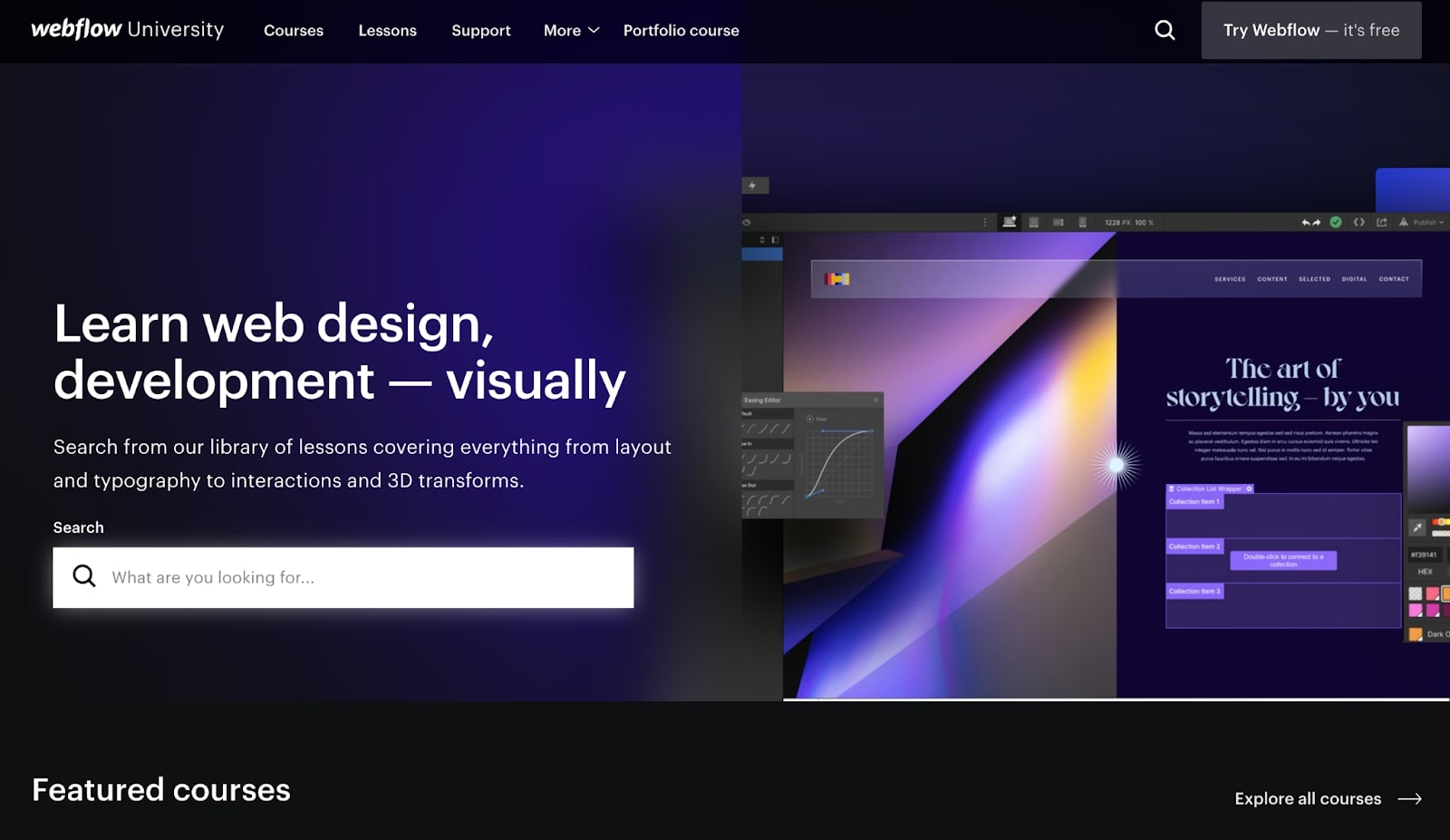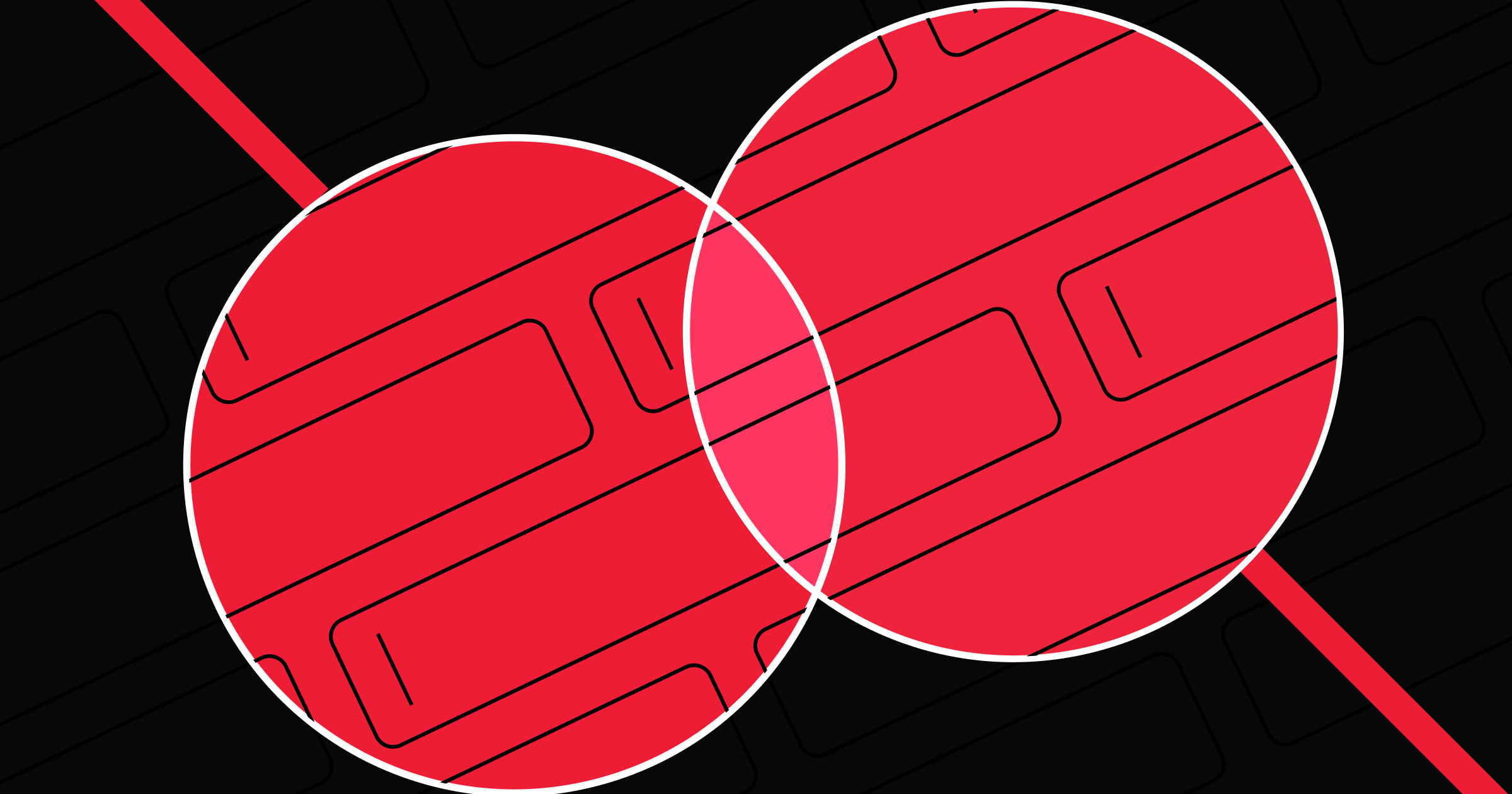Do you know what Quora, HubSpot, Medium, and Pinterest all have in common?
They all grew to become billion dollar companies because of SEO.
SEO stands for search engine optimization, and it’s a powerful growth lever that many businesses use. When you invest in SEO and start producing content on your website, you can rely less on social media algorithms and paid advertising to get your brand out into the world.
SEO is also a great content marketing channel because it has intent. People turn to Google to search for answers and solutions to problems — they want to click on something. If you understand what your customers are struggling with, you can produce content that addresses those issues. And if you give them the answers they need, there’s a better chance they’ll end up doing business with you.
Social media and paid advertising, on the other hand, are disruptive. Most of the time, when someone sees an ad or a social media post, they’re not in the mindset to check out your business. Don’t get me wrong, these two ways of marketing are highly effective — but they don’t have the same built-in intent that SEO does.
With that said, let’s go over how to craft and adjust our SEO marketing strategy over time.
What makes a good SEO marketing strategy?
A good SEO marketing strategy is rooted in understanding the search journey your target customers go through. As your business grows, you need to understand the levels of awareness people go through when searching in Google.
Here’s a general journey your potential customers may go through:
- Problem aware: When someone knows a problem they have and are looking for solutions.
- Solution aware: When someone now knows a solution exists and needs to know how your solution solves their pain.
- Product aware: When someone knows how your solution solves their pain and needs to know if it’s the best one for them.
- Most aware: When someone knows your solution is the best for them and needs to know the deal.
Here’s an example of what that could look like with a proper keyword strategy:
- Problem aware: How to build a website
- Solution aware: Best website builders
- Product aware: Webflow vs WordPress
- Most aware: Webflow pricing
In marketing, the general consensus is that you go through a digital marketing funnel from the top of the funnel to the bottom of the funnel. In the real world, it doesn’t always work like that.
In fact, to have an effective SEO strategy that drives revenue for your business, you need to start at the bottom of the funnel and work your way up. In the section below, I’ll show you the four stages of this strategy. The stages start from the bottom of the funnel and end with the top of the funnel.
4 stages of your SEO marketing strategy
Here are the stages you should go through as your business grows (in order):
- The foundations: your website settings
- The “who I am and what I do” stage
- The “how to use me” stage
- The “why you should use me” stage
Let’s dive deeper into each stage.
1. The foundations: your website settings
When you build your website, you need to make sure that it’s optimized for SEO and ensure you have the proper tools set up to get your pages indexed and crawled in Google.
The foundations look like:
- Correct URL structures and site architecture
- On-page SEO
- Technical SEO
- Setting up your sitemap and submitting to Google Search Console
Site architecture and URLs
You need to make sure that the website builder you use takes SEO best practices into consideration. If you’re using Webflow, then you have access to all of the SEO settings you need.
The part you need to pay attention to here is how you build your website and the URL structures you use. If you’re using a website template, chances are your site is built correctly from an SEO standpoint. If you’re building a website from scratch, you need to make sure that you’re following landing page design best practices.
Check out Webflow University to learn how to design a website correctly.
For URL structures, you need to make sure your CMS (content management system) gives you the flexibility to create different page types.
For example, you might want to have your blog live on yourwebsite.com/blog and keep your product use cases under yourwebsite.com/use-case. And if you plan to discuss competitors in depth, you might consider creating yourwebsite.com/vs. Your site architecture is key to letting Google’s crawlers know what your site content is about.
Check out how sites like Webflow, Lattice, and Slidebean set up their site to get a better understanding of how to structure your website and pages.
On-page SEO
On-page SEO is how you structure content on your pages so that Google can better understand what your page is about.
On-page SEO includes tactics like:
- Using keywords you’re targeting in your headings and page content
- Including keywords you’re targeting in your URL slug
- Having proper H1, H2, H3, H4, etc. headings on your pages
I won’t go into too much detail on all the on-page SEO guidelines, but Moz has a great guide on this if you want to read more.
Technical SEO
The next step is to make sure your technical SEO is clean. If you’re using a modern website platform then most of the things you need to take into consideration are already taken care of.
However, there are a few things you should look out for, such as:
- Making sure there are no broken links on your website
- Adding proper schema markup to pages that need them
- Setting canonical tags on your web pages
- Creating a sitemap that only includes pages on your site that you want to rank in search engine results
Technical SEO is a very broad subject in the SEO space. If you just have a standard business website, and you’re trying to drive more organic traffic to it, then you don’t have to worry too much about it (besides the bullet points mentioned above).
If your website has tons of UGC (user-generated content) then technical SEO will matter more.
Setting up your sitemap and submitting to Google Search Console
Depending on the CMS and website platform you’re using, you’ll want to set up your website's sitemap. In Webflow, you can easily set this in your project’s SEO settings. Other website building platforms may also have similar settings.
Your sitemap generally lives on yourwebsite.com/sitemap.xml and consists of pages you deem important for Google to index and crawl. With time, Google will crawl your website regardless. However, keeping your sitemap up to date can help Google better determine which pages it should prioritize in its crawl queue.
The reason your sitemap is important is because you’ll want to set up Google Search Console for your website and submit your sitemap to it. Any time you make changes to your website, you can tell Google to recheck your sitemap and make sure it knows what pages on your site are important.
Assuming you have your website basics down, let’s get into the growth strategy.
2. The “who I am and what I do” stage
This is the initial stage of your SEO strategy. It’s the lowest part of the funnel that you need to get right so that anytime someone visits your website, you have a good chance of getting a conversion.
This is the part where you tell the world what your business is and what it does. This includes your homepage, product feature pages, about page, pricing page, and contact page.
At a first glance, you may not think these are important for SEO. However, these pages are how you get people in the most aware stage to sign up for your products and services. Without these, all the traffic that you get at the top of the funnel (which we’ll go over later) will not convert.
You’ll generally want these pages to exist on your root domain. So your pricing page could live on yourwebsite.com/pricing and your product feature pages could live on yourwesite.com/feature.
For example, on Webflow, all of the product feature pages live on the root URL of webflow.com. Webflow CMS on webflow.com/cms, Webflow Hosting on webflow.com/hosting, and so on.
This stage of your SEO marketing strategy is the foundational part. You don’t want to move onto the other stages until you have this part down.
3. The “how to use me” stage
This stage of your SEO strategy is where you create content that shows how to use your products and services.
This can be your learning center, resource hub, and product related posts on your blog. These are your “activation” pages — where users land when they want to learn how to use your product.

Remember, we always want to start creating content lower in the funnel first. Your SEO strategy is heavily connected to your content strategy. SEO is simply the act of getting your content to rank in search engines. So if you don’t have content, there’s nothing to rank.
For Webflow, this stage could look like going after keywords like “webflow tutorial” or “webflow templates.” These are keywords that your users will be searching for after they sign up or buy your product, so they’ll look different for each business.
This stage is important because it’s how you make sure your new customers are successful and enjoy using your products and services.
From a purely tactical SEO standpoint, you can use a keyword research tool to figure out what keywords related to your business people are searching for. These will generally be branded terms otherwise known as keywords that include your business name in them. So, the number of keywords you can go after in this stage will depend on how well known your brand already is.
You’ll also want these pages on your website to be located in your navbar and footer. The most important ones, like your product features, learning center, and blog, should be in your navbar. Then, you should also include them in your footer along with other important resources on your website.
When it comes to “SEO juice,” pages in your navbar get the most link equity. So you need to be strategic with what goes in your navbar.

ClickUp is a good example. Their navbar uses a folder structure so they can nest multiple pages under one category. For example, under the “product” folder, they include subpages like tasks, docs, goals, integrations, apps, and import.
You want all of your important hubs of content to be located in your navbar so people (and Google) can easily find them.
Once you have all of your branded keywords and fundamental pages down, it’s time to move up the funnel.
4. The “why you should use me” stage
This stage of your SEO strategy is where the real growth happens. Without the other stages in place, you won’t get the most out of this part.
You can think of this stage as having three different sub-stages — product aware, solution aware, and problem aware.
Let’s go over what that will look like, in order.
Product aware stage for SEO
This stage is when people know your product exists and are trying to evaluate if it’s right for them. These pages have the chance to be some of the highest converting pages on your website because people in this stage are ready to make a purchasing decision.
From an SEO standpoint, pages like this can include:
- VS pages, where you compare your product with a close competitor (e.g. Webflow vs. Wordpress)
- Blog posts that go after your competitors via “alternative” keywords (e.g. 15 best Photoshop alternatives in 2022)
- Blog posts that go after branded keywords (e.g. Top 10 reasons your design team should use Webflow)
- Customer case studies (e.g. customer stories)
What you’ll notice about all of these pages and stages we’ve gone over so far, is that they all talk about your product. They have the potential to convert really well, however they don’t do the best job of bringing new awareness to your business. People have to already know you exist to stumble across these pages.
So let’s go over how to get people to discover you for the first time in Google.
Solution aware stage for SEO
This stage of the SEO journey is when people are searching for use cases that your business addresses. These pages can be produced in the form of:
- Use case landing pages (e.g. No-code development)
- Best-type blog list posts (e.g. 11 best web design software tools in 2022)
Notice how these pages go after keywords that do not include a brand name — /no-code and /best-web-design-software. The goal of these pages is to get people to discover your brand for the first time. It’s also a way for people to quickly understand what your business is when they discover you.
These pages tend to drive more SEO traffic than pages in the previous stages because they’re going after non-branded terms. They also have the chance to convert well because they are very product-focused — they lead visitors straight to your solutions.
It’s important to remember that, as your business grows, you need to be creating pages for all of these stages in the “why you should use me” part of your SEO strategy.
So far, inside of this stage, we’ve gone over two of the three sub-stages you want to create content for. You want to start in order of everything mentioned so far because the last stage is where the high growth will come from.
Up until now, we’ve been preparing our website’s SEO strategy to be able to fulfill the search needs for all the new people that are about to discover your business in the problem aware stage.
Problem aware stage for SEO
They say you should save the best for last, and that’s what this section is. Here is where you’ll only be targeting non-branded keywords to grow your brand awareness and attract new people into your other stages.
If we recall what we talked about earlier, the problem aware stage is where someone has a problem and they need a solution.
For this part, you’re going to have to understand your target audience and use a keyword research tool to uncover the topics they’re searching for in your industry.
These pages will consist primarily of blog posts that aim at answering questions and helping people in your general industry. The goal of these posts is not to sell your products or services, but rather to help people.
Here are some example of problem aware keywords targeted on the Webflow blog:
These pages will generally be either inspirational or informational, such as how-to guides.
As you can see, none of these pages are targeting our business name. This way, most of the people that land on these pages from SEO don’t even know our business exists. These pages could very much be the first time someone ever interacts with the brand.
This stage of your SEO marketing strategy is where most of your organic traffic will come from. However, if you just skip to this part and don’t address all of the previous sections we talked about earlier, you’ll get a lot of visitors but little to no conversions.
If you follow the order from bottom of the funnel to the top, by the time you get to this stage you’ll have enough resources to link out to in this problem aware stage. You’ll also give people the opportunity to learn more about your product offerings when they make follow up searches in Google about your brand.
That’s it! It’s a fairly straightforward framework to follow, but not an easy one. Creating content takes time and resources. But once you do have a lot of content and it starts ranking in Google, you’ll have an advantage over your competitors who don’t have a proper SEO marketing strategy in place.
SEO is an important business investment
As your business grows, you need to focus on putting your efforts in different stages of your SEO marketing strategy. In the beginning, you want to focus on all the branded stuff — homepage, product pages, VS pages, landing pages, etc. As you grow, you’ll want to move your attention to more of the non-branded stuff — high volume keywords on your blog, use case pages, etc.
If we actually turn the levels of awareness upside down, we can see what really goes on:
- Most aware: Highest converting, lowest traffic
- Product aware: High converting, low traffic
- Solution aware: Medium converting, medium traffic
- Problem aware: Low converting, high traffic
This is the order in which you need to create content. You don’t want to go straight to the problem aware stage in your SEO marketing strategy because you won’t get a lot of conversions. Sure, your traffic will be growing but it will quickly become a vanity metric if that traffic isn’t turning into revenue.
If you don’t have content in the solution and product aware stages, you won’t give people a chance to do a follow up Google search and discover more about you.
This is why thinking about your SEO marketing strategy in stages is important. Don’t expect people to browse your actual site to find all of your content “in order.” Assume people only find your content through Google’s SERP (search engine results page). So once you do have a lot of traffic coming from the problem aware stage, you’ll already have pages ranking in the other stages and give people a chance to learn more about you.



















SEO and Webflow: the essential guide
Get 13 need-to know tips on website SEO — whether or not you use Webflow.































